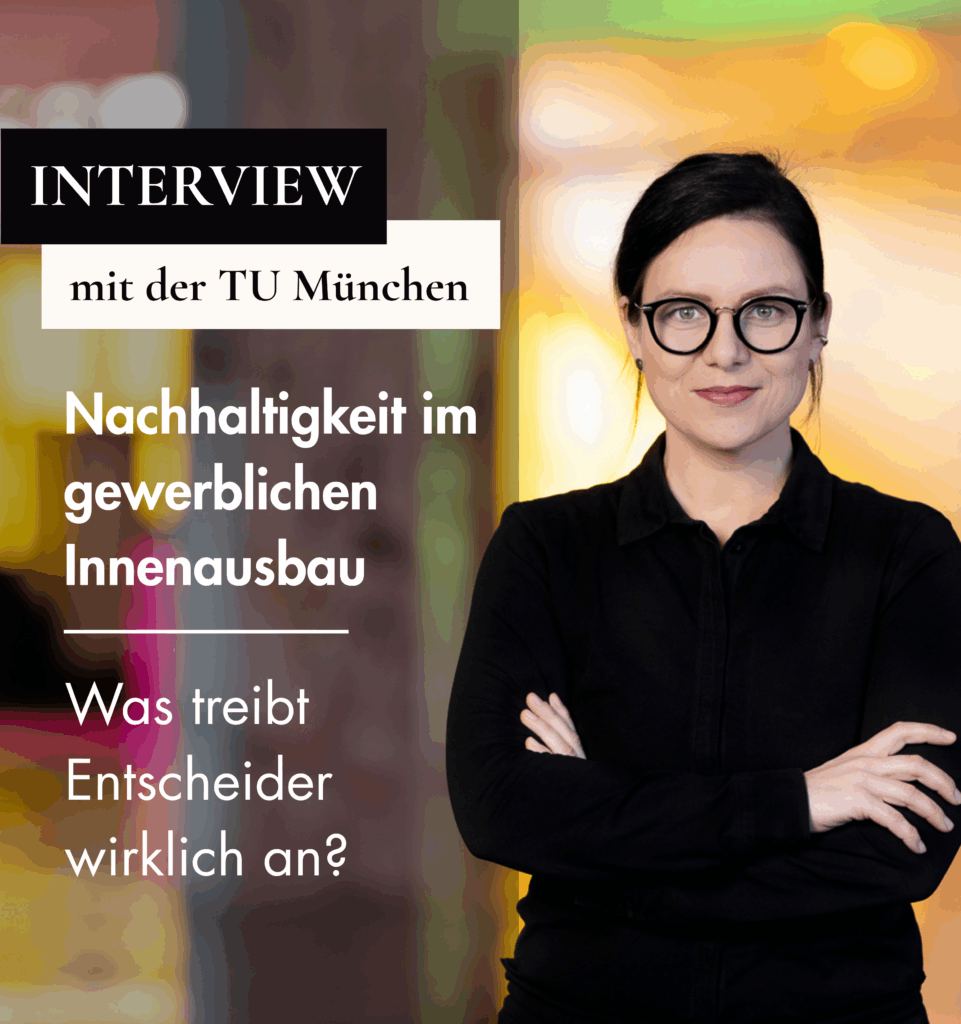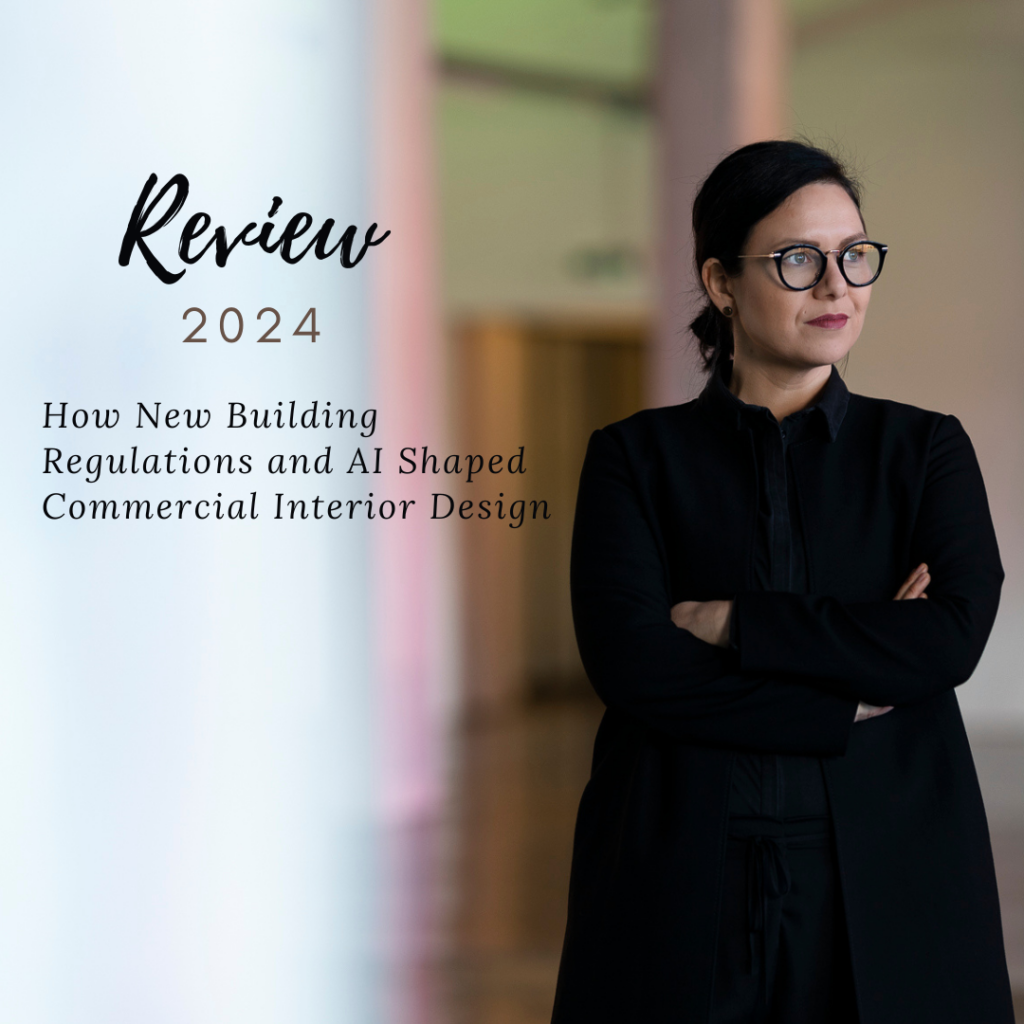A Conversation with TU Munich on Sustainable Interior Design
I recently had the opportunity to speak with TU Munich as part of a research project on sustainability in interior construction.
An interdisciplinary student team from the Chair of Innovation Management at TUM is currently analyzing forward-looking developments in sustainable work environments. As part of the Lead User Project, their focus lies on the future of interior architecture – from circular furniture systems to space-efficient layouts and innovative materials.
Sustainability has long ceased to be just a PR issue.
It has arrived in commercial interior construction –
at least in conversations.
But what actually motivates decision-makers to plan more sufficiently, to reuse materials, or to enable new space concepts?
That was also the central question in my discussion with TU Munich on sustainable office design. And one thing became clear very quickly:
Sustainability only works when it aligns with the project – and its drivers.
1. Cost-efficiency as leverage – Re-use must not create extra work
In commercial interior projects – whether retail or office – three things matter most:
fast implementation
visible results
economic efficiency
Sustainable strategies like re-use, urban mining, or leasing models for technical equipment only stand a chance if they simplify processes or save costs.
In short:
Sustainability in commercial fit-outs must not add complexity – it must reduce it.
💡 A real-life example:
In one client project, working with Concular (Urban Mining) not only created transparency around material flows but also delivered real cost advantages. The environmental benefits were welcome – but not the key driver. What mattered was: it made economic sense.
2. Who actually defines what “sustainable” means?
One of the biggest challenges is that the perspectives of users and decision-makers often differ significantly.
Employees might wish for quality break areas, flexible workspaces, or a good remote work setup.
Clients, investors, or expansion managers, on the other hand, are thinking about brand guidelines, rent returns, and investment cycles.
In practice, this means:
We need to ask the right questions early on –
and more importantly: reach the right people.
Some typical drivers for sustainability in commercial interior fit-outs include:
cost pressure or lifecycle cost reduction
brand identity, ESG targets, or certification goals (e.g., DGNB)
talent attraction and retention
location appeal
When we understand these drivers, we can argue – not just appeal.
3. The right set of questions brings depth to the conversation
Sufficient planning doesn’t start with solutions – it starts with the right questions.
The DGNB provides a helpful list of questions specifically tailored to planners. Even more useful: it can also be used during early conversations with stakeholders – as a conversation starter or to assess openness.
Here’s a brief selection:
Which materials can be reused?
Which resources can be reduced?
Can spaces be shared or used multiple times?
What are the long-term operating costs?
➡️ These questions help clarify whether sustainability plays an active role in your project – or is just an afterthought.
👉 Link to the DGNB planning checklist:
https://www.dgnb.de/en/topics/circular-economy/checklists
Final thought: Re-use and sufficiency are universal levers – regardless of motivation
Whether sustainability is driven by values, budgets, or brand image – what matters most is what you do with it.
Sustainability in commercial interiors means:
identifying the right levers, planning pragmatically – and having the courage to embrace sufficiency.
🌱 Sufficiency is not about giving up quality – it’s about gaining clarity.
🌱 Re-use is not a compromise – it’s a future-ready design approach.
🌱 Sustainability doesn’t begin with certification – it begins with conversation.
Are you responsible for retail or office fit-out projects?
Let’s talk:
What could sustainability look like in your specific context?



